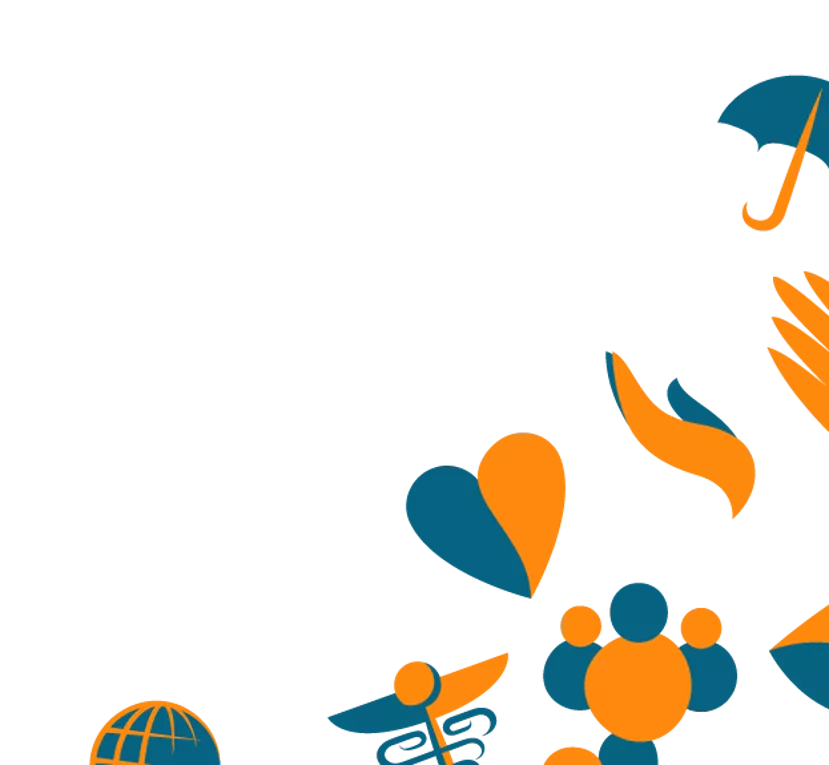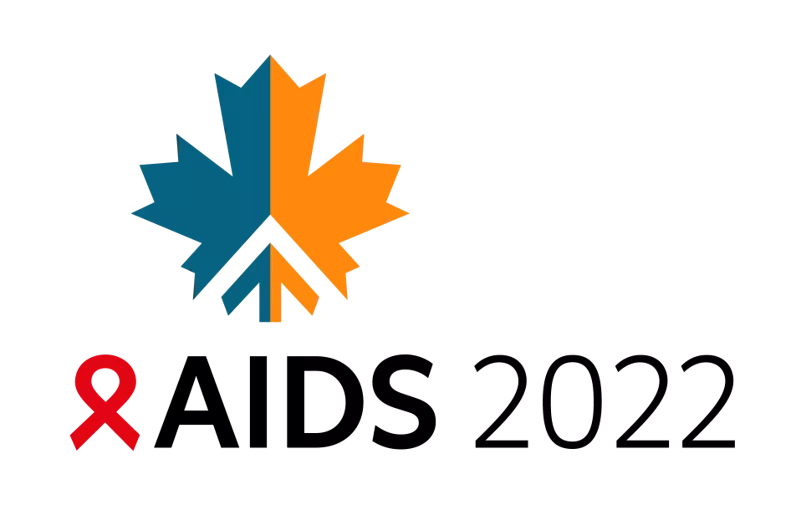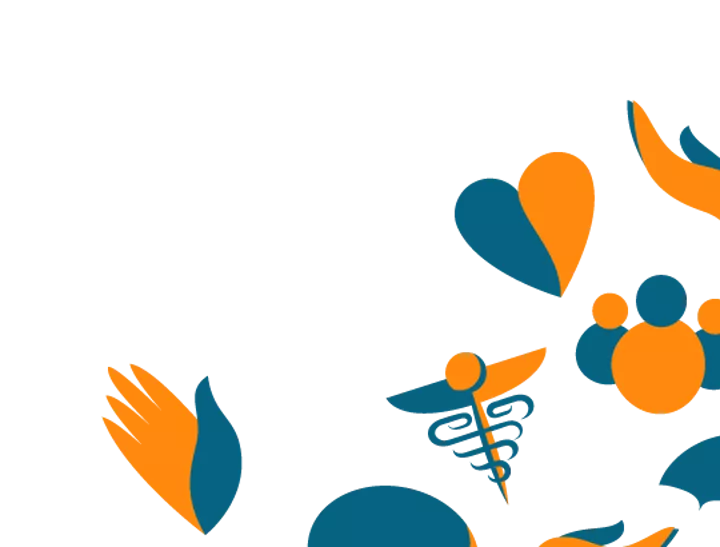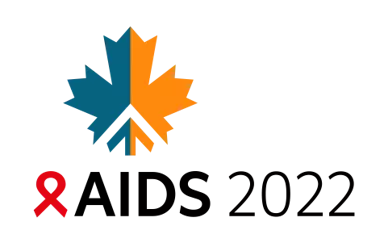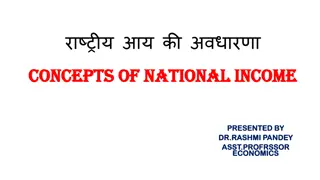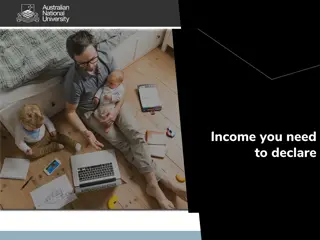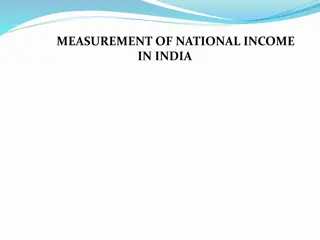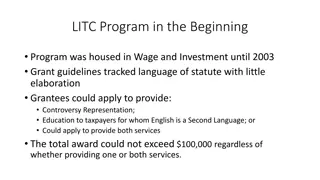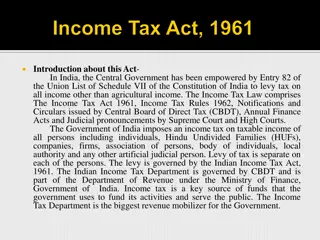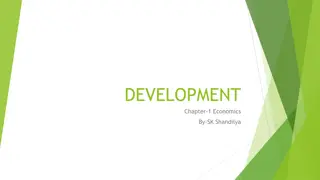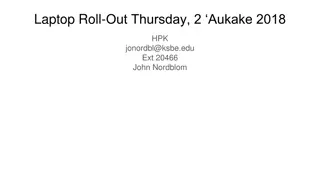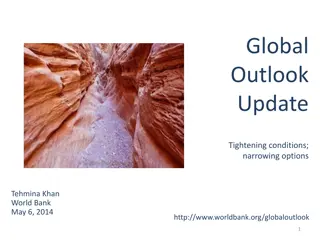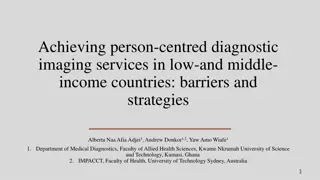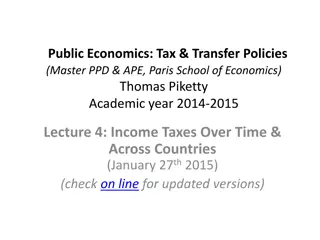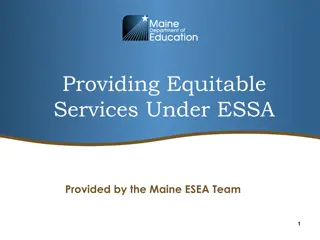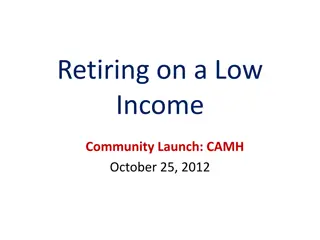Enhancing Equitable Health Product Roll-out in Low- and Middle-Income Countries
Strategies to enhance equitable access to health products in low- and middle-income countries will be discussed at the AIDS 2022 conference, focusing on key factors such as availability, acceptability, affordability, accessibility, and quality. The Medicines Patent Pool aims to increase access to innovative medicines through licensing and technology transfer. Timelines for scale-up of antiretrovirals in LMICs, including Tenofovir and Dolutegravir, will be outlined.
Download Presentation

Please find below an Image/Link to download the presentation.
The content on the website is provided AS IS for your information and personal use only. It may not be sold, licensed, or shared on other websites without obtaining consent from the author. Download presentation by click this link. If you encounter any issues during the download, it is possible that the publisher has removed the file from their server.
E N D
Presentation Transcript
aids2022.org #AIDS2022 29 July 2 August Montreal & virtual Esteban Burrone Equitable roll out of health products: What will it take? Strategies to enhance equitable health product roll out in low- and middle-income countries
Medicines Patent Pool (MPP) Mission & Vision Mission Our mission is to increase equitable access to innovative medicines and other health technologies through public health-oriented voluntary licensing and technology transfer. Vision A world in which people in need in LMICs have rapid access to effective and affordable medical treatments and health technologies. 29 July 2 August Montreal & virtual aids2022.org #AIDS2022 2
Key Factors for Access to Health Products Availability Acceptability Affordability Accessibility Quality 29 July 2 August Montreal & virtual aids2022.org #AIDS2022
Key Factors for Access to Health Products Demand Health systems capacity Screening/testing/diagnosis Clinical evidence Healthcare workers Availability Acceptability Affordability Guidelines Procurement Supply capacity Operational research Supply chains Accessibility Quality Models of care Pricing User needs/ preferences Regulatory systems Cost-effectiveness Financing 29 July 2 August Montreal & virtual aids2022.org #AIDS2022
Timeline for scale-up of ARVs in LMICs The Case of Tenofovir 250 30 tab packs TLE/TEE pa (millions) GF PRs 200 150 100 50 0 10-11 years Approval of tenofovir by the US FDA Beginning of scale-up in LMICs Source: GF PPM/PQR data. 2014 for part year; UNITAID and GF price data 29 July 2 August Montreal & virtual aids2022.org #AIDS2022
Timeline for scale-up of ARVs in LMICs Millions of people on Dolutegravir-based regimens in LMICs by year 25 20 15 10 5 0 2013 2014 2015 2016 2017 2018 2019 2020 2021 ~ 5 years Approval of Dolutegravir by the US FDA Beginning of scale-up in LMICs 29 July 2 August Montreal & virtual aids2022.org #AIDS2022
DTG et TLD Chronologie Milestones for availabilty of generic dolutegravir regimens in LMICs June 2016 : WHO Guidelines recommend DTG in 1st- line July 2018 : TLD recommended as preferred 1st line treatment regimen August 2013 : Dolutegravir approved by the US FDA 2020 2021 2019 2018 2017 2016 2014 2015 2013 April 2014 Licence between ViiV and MPP enabling development of generic versions of DTG and combinations like TLD April 2016 Licence expanded to cover all remaining Lower Middle Income Countries (e.g. Morocco, Ukraine, etc) Aug 2017 First two approvals for TLD combination by US FDA Dec 2021 : 585 million packs of DTG or TLD supplied in 122 countries Dec 2020 New MPP-ViiV licence focusing on 4 upper middle- income countries 29 July 2 August Montreal & virtual aids2022.org #AIDS2022 7
Countries that have had access to generic DTG-based regimens (2017-2021) Countries of Sale (122), where 99.5% of PLHIV^ covered by the license reside# Afghanistan Botswana Ecuador Honduras Moldova, Republic of Rwanda Timor-Leste Albania Burkina Faso Egypt India Mongolia Saint Kitts and Nevis Togo Algeria Burundi El Salvador Indonesia Montserrat Saint Lucia Turkmenistan Turks and Caicos Islands Iran (Islamic Republic of) Saint Vincent and the Grenadines Angola Cabo Verde Equatorial Guinea Morocco Anguilla Cambodia Eritrea Jamaica Mozambique Sao Tome and Principe Uganda Antigua and Barbuda Cameroon Central African Republic Eswatini Kenya Myanmar Senegal Ukraine Argentina Ethiopia Kosovo Namibia Seychelles Uruguay Armenia Chad Fiji Kyrgyzstan Nepal Sierra Leone Uzbekistan Lao People's Democratic Republic (the) Venezuela (Bolivarian Republic of) Azerbaijan Chile Gabon Nicaragua Somalia Bahamas Comoros Gambia Lebanon Niger South Africa Viet Nam Bangladesh Congo Georgia Lesotho Nigeria South Sudan Virgin Islands (British) Congo, democratic Republic of the Barbados Ghana Liberia Oman Sri Lanka Yemen Belarus Costa Rica Grenada Libya Pakistan Sudan Zambia Belize C te d'Ivoire Guatemala Madagascar Panama Suriname Zimbabwe Benin Cuba Guinea Malawi Papua New Guinea Syrian Arab Republic Bermuda Djibouti Guinea-Bissau Mali Paraguay Tajikistan Tanzania, United Republic of Thailand Bhutan Dominica Guyana Mauritania Peru Bolivia Dominican Republic Haiti Mauritius Philippines 29 July 2 August Montreal & virtual aids2022.org #AIDS2022 Data as of December 2021
Accelerating the timelines to effective generic competition Selectingqualified manufacturers through an open Expression of Interest process Supporting and monitoring regulatory processes and filings Ensuring compliance with all licensing terms (e.g., packaging and trade dress, potential royalties) Informing partners on opportunities for procurement offered by the licence Strong licence management helping to accelerate access and build robust competition faster Supporting development of API, formulations, technology transfer, data packages, reference product Undertaking quarterly review meetings with licensees Supporting investment prioritisation and API make or buy decisions by licensees Addressing other access barriers working closely with other stakeholders Reporting on progress (filings, registrations, sales, volumes) 29 July 2 August Montreal & virtual aids2022.org #AIDS2022
Some critical enablers Early licensing between MPP and ViiV to enable development of generics and TLD combination and proactive engagement with manufacturers to accelerate development/access Unitaid and others funding key clinical trials generating needed evidence on use of DTG and TLD in LMICs (and in specific populations, eg pregnant women, people with TB, etc) Regulatory processes enabling quality assurance (USFDA tentative approval, WHO PQ) and national approvals WHO and national guidance on when/where/how to transition Early market signals and forecasts showing high volumes needed, and CHAI-led pricing agreement for TLD Support for product introduction in various countries by multiple stakeholders Strong voice of community demanding access (e.g. women living with HIV in 2018) Market shaping by key funders (e.g. PEPFAR, Global Fund) and national programmes and many more 29 July 2 August Montreal & virtual aids2022.org #AIDS2022
Chronology for access to generic COVID-19 Antivirals Expected approval of generic product by WHO Prequaflication Approval of innovator product Merck Licences MPP/generics Molnupiravir Feb Dec. Aug. Avril - Oct Nov. 2023 2021 2022 Nirmatrelvir Expected approval of generic product by WHO Prequalification Approval of originator product MPP-Pfizer licence Expected timeline from approval of originator product to generic availability: 9 to 14 months can this be replicated? 11 29 July 2 August Montreal & virtual aids2022.org #AIDS2022
Some lessons learnt With respect to the Licensing itself - Licensing as soon as possible preferably while product still in development - Where needed, tech transfer to accelerate access to reference product can be important - Close interaction with innovator, generics and other stakeholders to address challenges - Non-exclusive licensing to ensure sufficient manufacturers to enable robust competition - Beyond licensing Ensure key public health friendly terms in the licence - Generating the needed evidence and data to inform decision-making - Market signals that incentivize generics to invest in and prioritize development - Political will at country level and support to countries for transitioning early adopters - Responsive regulatory authorities - Critical role of communities throughout the process 29 July 2 August Montreal & virtual aids2022.org #AIDS2022
Acknowledgements MPP s work in HIV is fully funded by MPP thanks all its partners, including originator and generic companies, civil society, communities, governments, public health agencies and many other stakeholders for their support and collaboration without which none of these achivements would be possible. 29 July 2 August Montreal & virtual aids2022.org #AIDS2022
Thank you www.medicinespatentpool.org www.medspal.org eburrone@mppf.net


